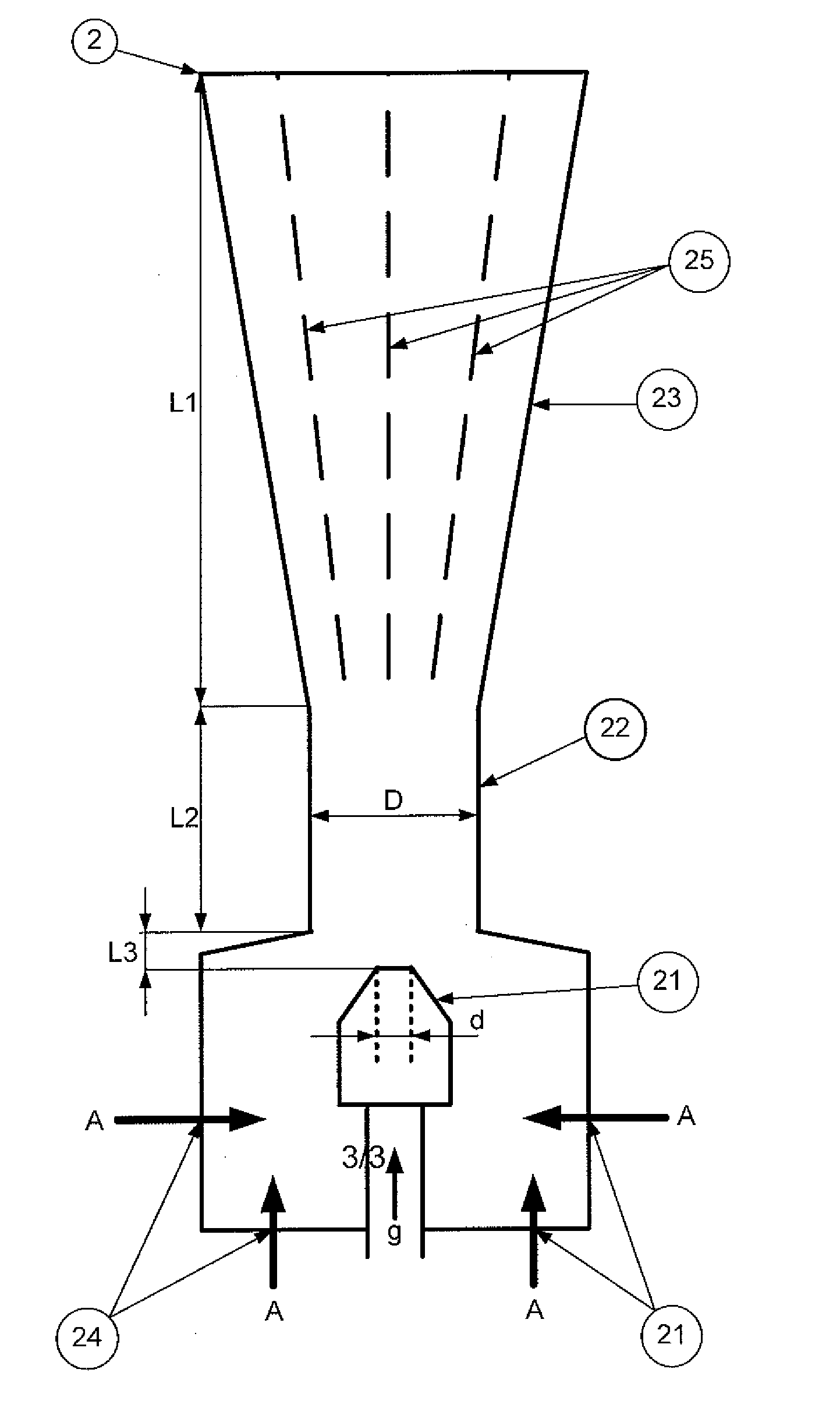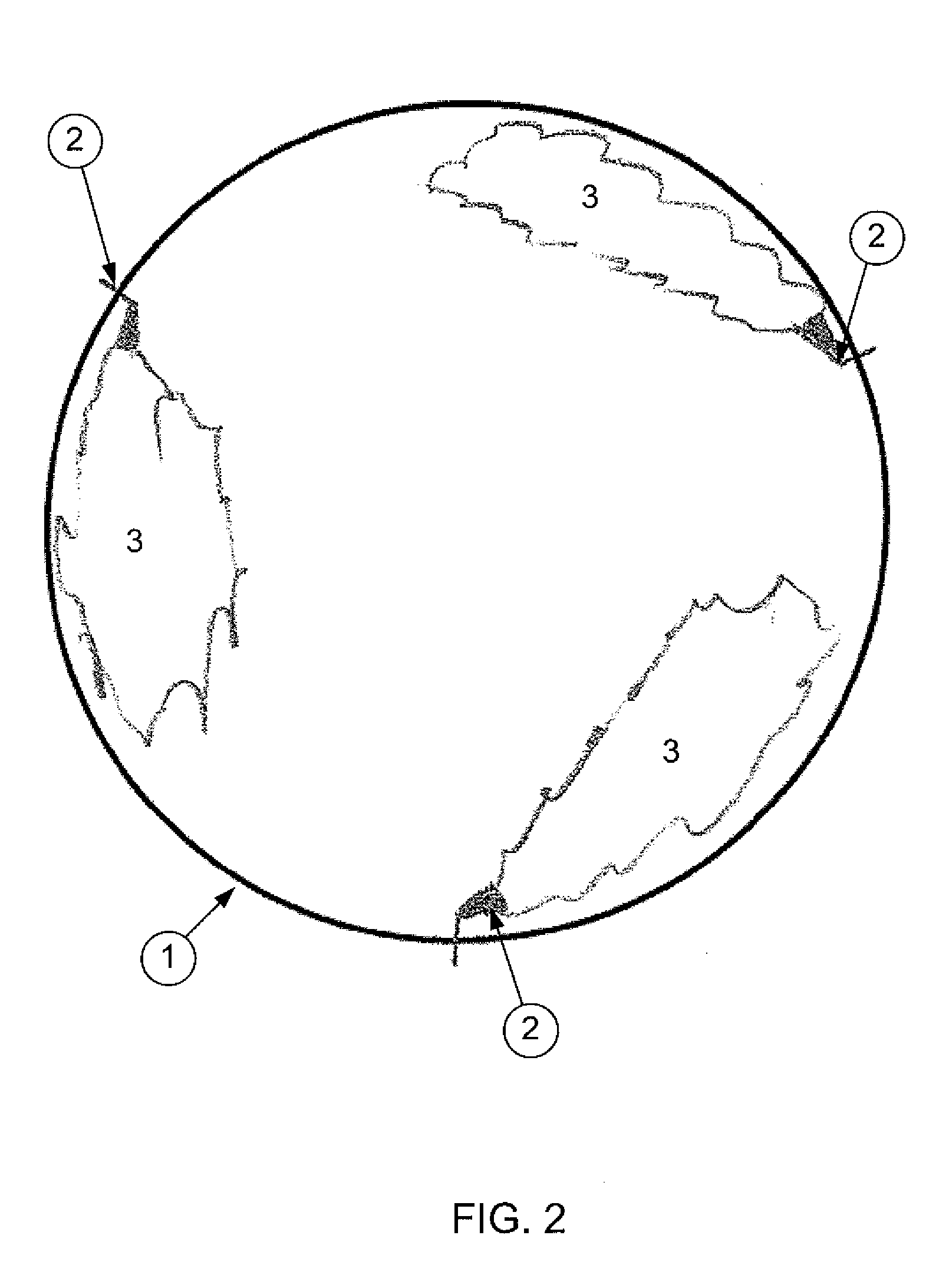Method for extinguishing a smouldering fire in a silo
a technology of silo and fire, applied in fire rescue, medical science, dental surgery, etc., can solve the problems of increasing the risk of biogas, reducing the oxygen supply of open fire, and reducing the amount of oxygen needed for an open fire, so as to reduce the risk of explosion
- Summary
- Abstract
- Description
- Claims
- Application Information
AI Technical Summary
Benefits of technology
Problems solved by technology
Method used
Image
Examples
Embodiment Construction
[0040]FIG. 1 shows an inert gas layer 3 formed by one venturi-type nozzle 2 in a silo 1 with a small diameter, e.g., with a diameter less than 3 m. The inert gas is injected as liquid gas through one venturi-type nozzle 2 above the stored content in the silo with a slow streaming velocity in such a way that mass ratio of the entrained surrounding gas to the incoming liquid inert gas is between 0.5 and 20, preferably in the range 1.0 and 5.0. The venturi-type nozzle 2 is essentially horizontal oriented. Thereby an essentially horizontal flat inert gas layer 3 is formed above the smouldering fire.
[0041]FIG. 2 shows one embodiment of the invention in a silo 1 with a larger diameter, e.g., more than 3 m. The inert gas is injected through three venturi-type nozzle 2 oriented in acute angle form the silo wall. Thereby no overlap of the resulting inert gas clouds 3 occurs. The formation of turbulence and air mixing into the inert gas layer is avoided and thereby a closed inert gas layer is...
PUM
 Login to View More
Login to View More Abstract
Description
Claims
Application Information
 Login to View More
Login to View More - R&D
- Intellectual Property
- Life Sciences
- Materials
- Tech Scout
- Unparalleled Data Quality
- Higher Quality Content
- 60% Fewer Hallucinations
Browse by: Latest US Patents, China's latest patents, Technical Efficacy Thesaurus, Application Domain, Technology Topic, Popular Technical Reports.
© 2025 PatSnap. All rights reserved.Legal|Privacy policy|Modern Slavery Act Transparency Statement|Sitemap|About US| Contact US: help@patsnap.com



